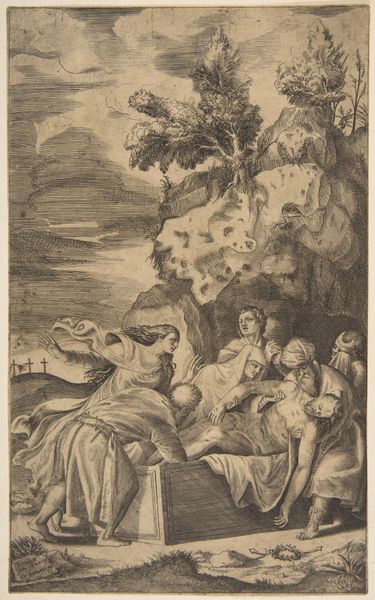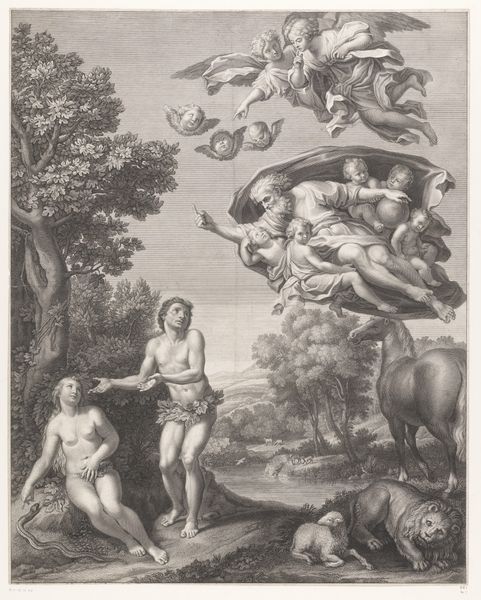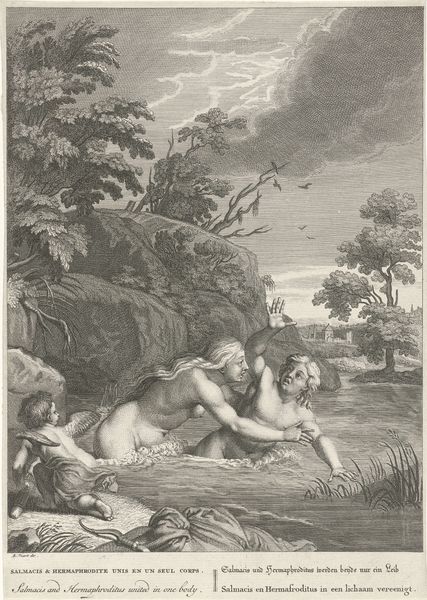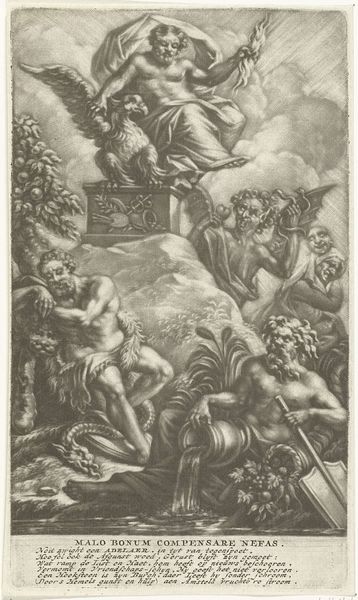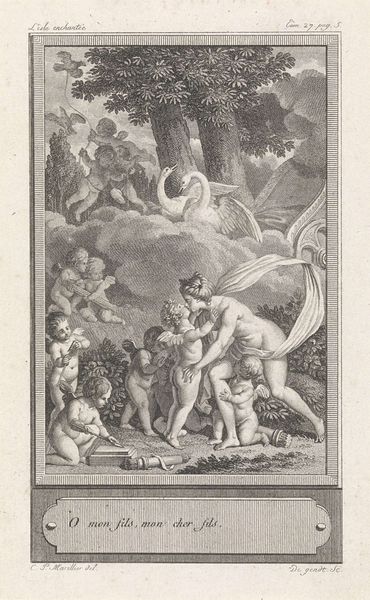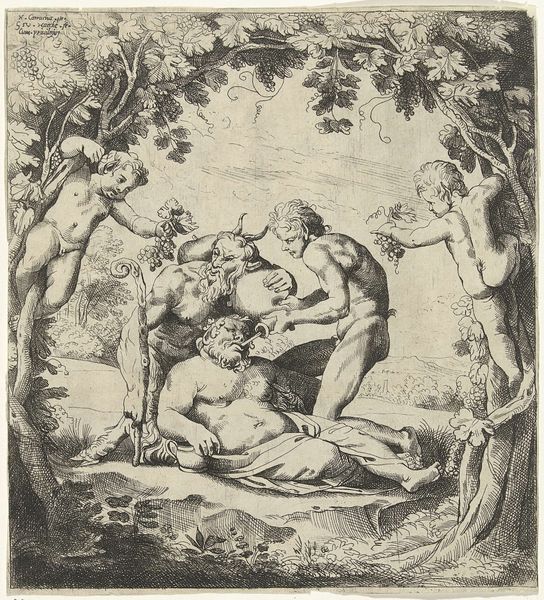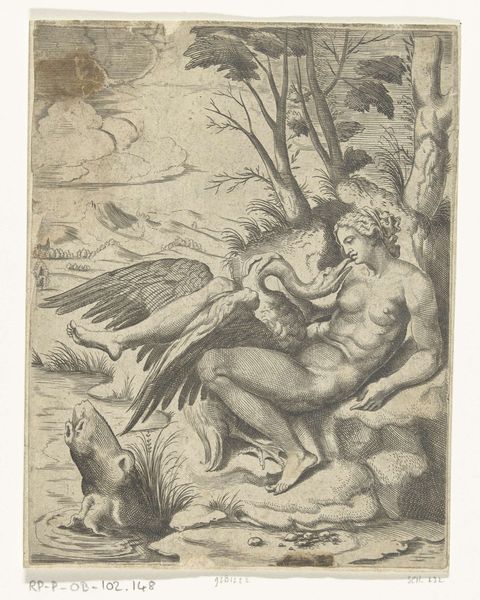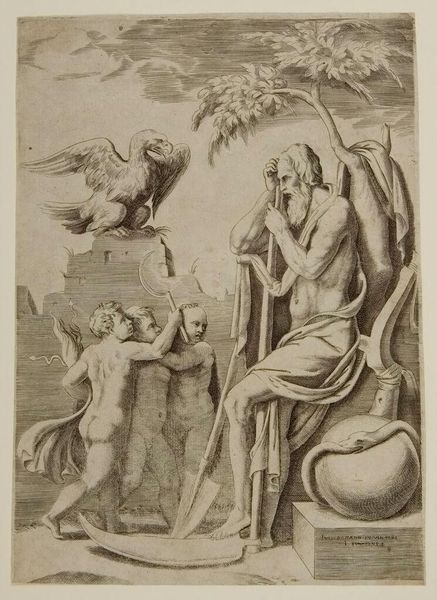
print, etching
#
allegory
#
narrative-art
#
baroque
# print
#
etching
#
figuration
#
surrealism
#
history-painting
Dimensions: height 379 mm, width 304 mm
Copyright: Rijks Museum: Open Domain
Curator: This print, made by Wallerant Vaillant between 1658 and 1677, depicts "Adonis Dies in the Arms of Venus." The artwork resides here at the Rijksmuseum. Editor: My first thought: grief. The scene feels heavy, dramatically shadowed, and incredibly still despite the swirling clouds. Curator: Yes, Vaillant captured a poignant moment from classical mythology, drawing on both visual and symbolic traditions. Venus cradles the dying Adonis, while Cupid weeps beside them. Notice the chariot drawn by swans in the background. Editor: And that discarded hunting horn—the instrument of Adonis's demise at the foot of the desolate Cupid, is indicative of a deeper societal tragedy. Hunting culture, typically seen as a symbol of aristocratic prowess and connection to nature, becomes complicit in a story of destruction and masculine vulnerability. Curator: Precisely. Hunting, historically and symbolically, signifies domination and control. Here, its failure suggests the fragility of power and the inevitability of fate. Furthermore, note that Venus’ swans traditionally signify beauty, grace, and love. Their presence enhances the contrast between divine love and mortal suffering, also that Venus seems powerless to avert Adonis' tragic fate. Editor: That powerlessness is key. Here we see, time and again, how power structures perpetuate tragic outcomes when they exist unchecked. This work is more than an illustration; it's a mirror reflecting cultural beliefs and values about love, loss, and social roles. The etching’s grayscale palette furthers the drama, contributing to a general mood of despondency and grief. I also notice that Venus and Adonis are presented nearly nude which, at the time, was almost certainly expected by art consumers given the context. However, now, I can't help but wonder how this choice impacted contemporary ideas around class and desire? Curator: You make an excellent point. Indeed, nudity carries heavy connotations about power and cultural standards. I think the symbolism throughout adds a layer of psychological complexity, evoking enduring emotional responses regarding themes such as love and loss that echo throughout human existence. Editor: Definitely. Even in this relatively small print, Vaillant gives us a panorama of grief—personal, societal, and existential. What does this work signify? And what system brought us here? That question is, to me, the core takeaway.
Comments
No comments
Be the first to comment and join the conversation on the ultimate creative platform.


